By Jim Davis - Florida Catholic
Photography: ARSOTO - CCJARRO | FC
READ MORE
- The Word made bronze
- Ángeles sin saberlo': Estará en Miami por dos meses
- “Angels Unawares” arrives at ‘the South’s Ellis Island’
- “Angels Unawares” sculpture on display in Miami
- https://angelsunawares.org
MIAMI | Many large-scale sculptors make abstract, ego-driven art for art's sake. Timothy Schmalz finds a different source of inspiration: holy writ.
Schmalz, a Canadian artist, is the creator of "Angels Unawares," a huge bronze sculpture that’s on display in Miami’s Bayfront Park, 301 Biscayne Blvd., until April 8, 2021. The sculpture, showing a 20-foot-long boat crowded with refugees from various lands, was commissioned and blessed by Pope Francis. The original stands in St. Peter's Square; a replica has been on a U.S. tour since April 2020.
"I believe there is an aspect of God's will in what I'm doing," Schmalz, 51, said by phone from his home in St. Jacobs, Ontario. "Artwork has the potential to show unity, harmony, showing that all human life is sacred."
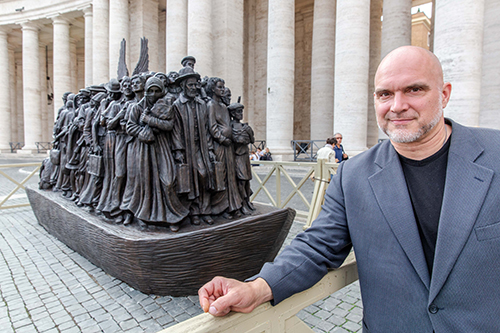
Photographer: Catholic News Agency
Canadian sculptor Timothy P. Schmalz poses next to his sculpture on the theme of refugees and migration titled 'Angels Unawares' in St. Peter's Square, Oct. 1, 2019.
Schmalz has long worked on scripture-based sculptures. He is perhaps best known for his "Homeless Jesus," showing the Son of God lying on a bench. It's part of a series on Matthew 25, showing Jesus enduring hunger, sickness, poverty and other plights.
His works have been placed in several countries and in South Florida venues, including Food for the Poor in Pompano Beach and the Coral Gables Congregational United Church of Christ.
Taking the form of a boat, "Angels Unawares" conveys both movement and solidity. The 140 passengers — Jewish, Muslim, Cherokee, African, Irish Catholic and others — are crowded into a boat, showing a range of emotions: grief, fatigue, anticipation. Above them, in their midst, stretch angel wings, suggesting that their lives are sacred. It's a literal interpretation of Hebrews 13:2: "Do not neglect to show hospitality to strangers, for thereby some have entertained angels unawares."
As Schmalz describes it, the design of "Angels Unawares" is meant to accomplish several goals.
One is to highlight migrants and refugees, whom he believes are invisible to most people. "If we can take these people and put them on a pedestal, and put a message on the pedestal that we have to love one another and care for the stranger, we can do something wonderful."
'YOU SEE YOURSELF'
Another goal is to place people next to others who are unlike them. Schmalz packed the 140 figures so close, they're literally joined together. And as a near-life-size artwork, "Angels Unawares" shows individual hats, faces and clothing styles. That gives them poise and humanity.
"I wanted to give dignity to a lot of people," Schmalz said. "They don’t look like Greek goddesses. They're real people. That's so important."
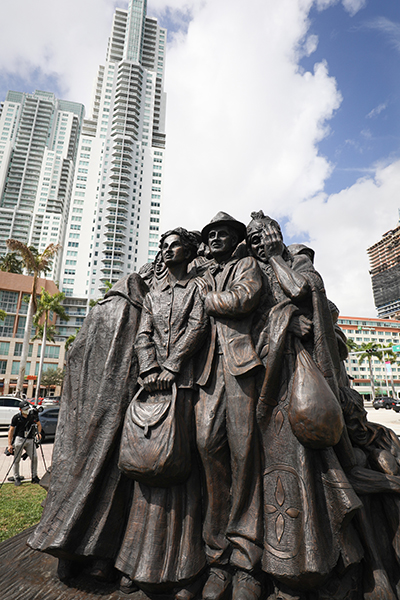
Photographer: TOM TRACY | FC
The Angels Unawares sculpture sits in a corner of Bayfront Park, surrounded by the tall buildings of downtown Miami Feb. 10, 2021. The sculpture, a tribute to migrants and refugees, will remain at the park through April 8, 2021.
Schmalz also wants viewers to reflect on their own lives and pasts, to remember migration in their heritage as well. If we're all from someplace else, we're literally in the same boat.
"When you see scripture, you see yourself," Schmalz said. "You can't look at any angle [of "Angels Unawares"] without seeing your ancestors or yourself."
The way Schmalz tells it, the genesis of "Angels Unawares" sounds almost providential. Two decades ago, he donated to a Jesuit campaign against AIDS in central Africa. He got a thank-you note from a Father Michael Czerny, detailing the work. The priest later looked him up in Canada, and they became friends.
Over the years, the two moved up: one in Bible-themed art, the other in Church ranks. Since 2016, the priest — now Cardinal Michael Czerny — has been under-secretary for the new migrants and refugees section at the Vatican, reporting directly to Pope Francis.
By then, Schmalz's sculptures had already been placed around the world, including five sites in Rome.
He marvels at the dual, merging timelines: "Me, trying to create positive sculptures, and him, working in the trenches. It's no surprise to me that he was put at that level so quick. He's the man for the job."
Meanwhile, Schmalz had been mulling how to depict Hebrews 13:2. He was shocked to find almost no artistic versions of the passage beyond T-shirts and coffee mugs. "One of the most beautiful verses in the Bible, and almost no paintings or sculptures?" he remembers thinking. "I've got to untie this knot."
HANDS ON HEART
Cardinal Czerny then asked Schmalz to make a sculpture on the topic of refugees and immigrants — and the boat motif sprang to mind.
"Bang! It just came to me," Schmalz said. "Almost like it fell from the ceiling."
He made a small version, five feet long, for Pope Francis to consider. The pope approved it, and Schmalz set to work on the full-size piece.
The assignment threw him into a demanding, seven-month schedule. He often rose at 4 a.m., then worked until 5 p.m. "At the end of the day, I was physically and mentally tired," he said.
But it helped to get personal feedback from the Holy Father after the dedication of the Vatican sculpture. As the two walked around it, Francis looked at him, smiled and placed both hands on his heart.
Although Schmalz is enjoying the response to "Angels Unawares," he isn't resting. He's already deep into his next project: another massive sculpture, showing a woman opening a dungeon hatch for others to escape. Calling it "Let the Oppressed Go Free," he's making the sculpture a tribute to St. Josephine Bakhita, a 19th century Sudanese woman who is the patron saint of human trafficking.
He regards that piece and "Angels Unawares" as very close in theme. As he warms to the topic, he sounds almost like another Pope Francis.
"Some people criticize him for always being on top of taking care of migrants and refugees — but to me, it's clear that if we don’t, they’ll die," he said. "When you bring it down to harsh reality, either we welcome strangers or we kill them. When we see that indifference kills, it becomes a moral responsibility of being Christian."
Hence his motivation: creating art not its own sake, but for the Creator's sake.
"I know I'm doing my absolute best to illustrate Christian truths," Schmalz said. "Following that, I get a sense of responsibility to do more like that. To raise the ante and bring more invisible things to light."
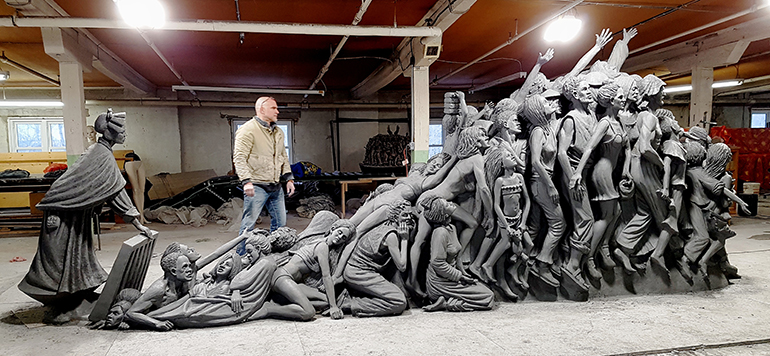
Photographer: COURTESY
Sculptor Timothy Schmalz looks over his next sculpture, "Let the Oppressed Go Free." The figure at left is St. Josephine Bakhita, patron saint of human trafficking.
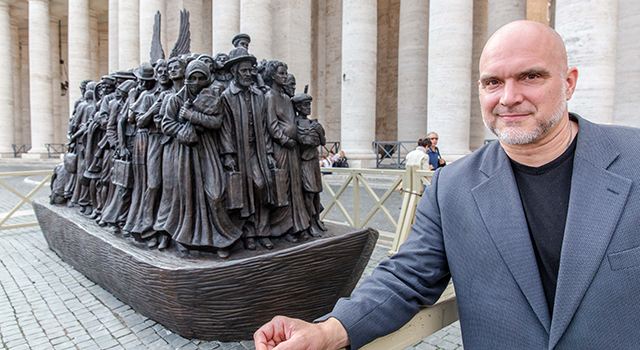
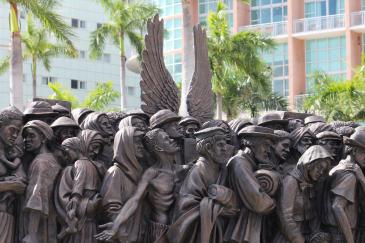
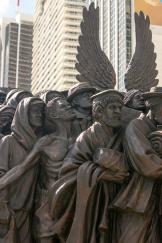
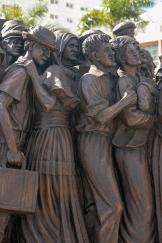
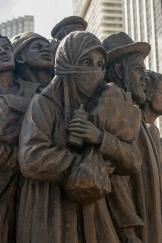
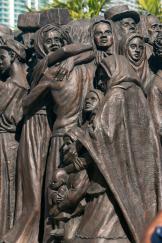
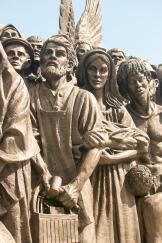
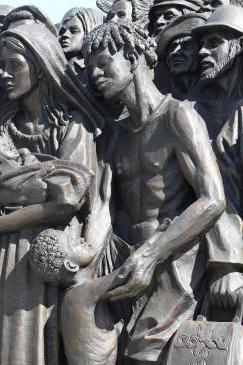
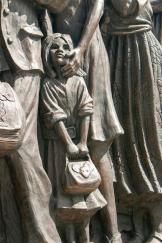
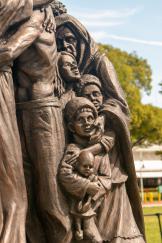
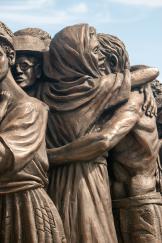
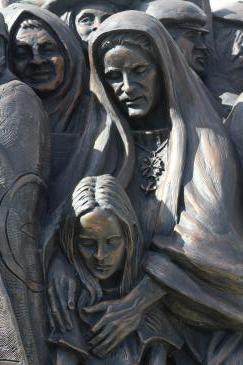
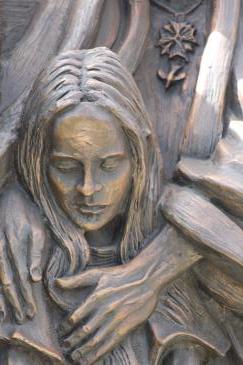
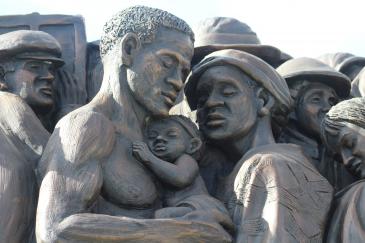
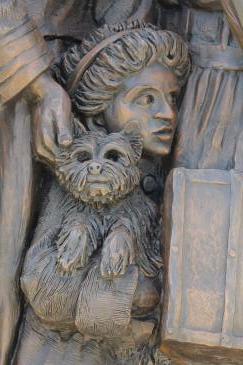
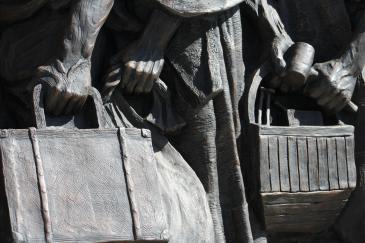
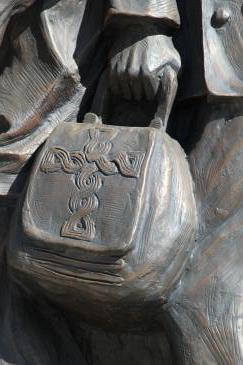
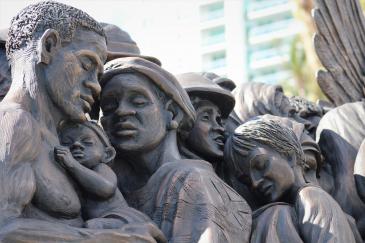
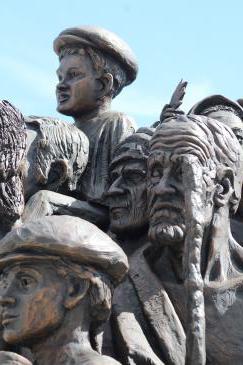
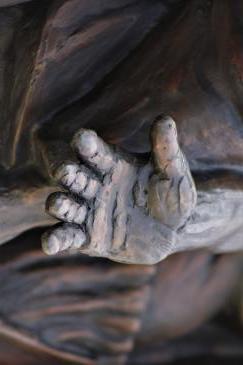
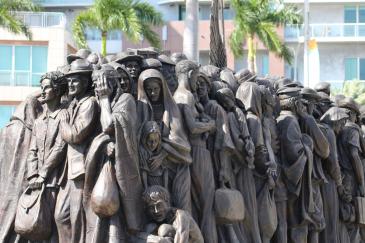
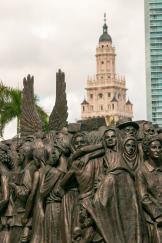

Comments from readers